On the first day of January of each year, local newscasts run stories about new laws that go into affect. And the UAS Industry in this country has a doozy of a new federal law that (partially) goes into affect this year. Not necessarily on January 1st though. So this article is a necessity.
On December 22nd, President Biden signed H.R.2670, also known as the 2024 National Defense Authorization Act (NDAA), which the Congressional Conference Committee sent to him on 12/14/23. And in doing so, also gave an early Christmas present to a some US drone manufacturers.
I’ll try and make this article not terribly dry or lengthy, but this is a semi-dry and lengthy regulation, so I won’t be very successful.
The NDAA “authorizes FY2024 appropriations and sets forth policies for Department of Defense (DOD) programs and activities, military construction, the national security programs of the Department of Energy (DOE), and the Maritime Administration”. And as with most larger appropriation style bills in Congress, this one is full of seemingly off-topic amendments.
One section of the NDAA that drastically affects the sUAS industry can be included in that list of off-topic amendments. It’s called the “American Security Drone Act of 2023”, better known as ASDA. The ASDA could not get the support it needed to pass as a stand alone piece of legislation, but it was successfully added to the NDAA under the Amendment process by those who supported it.
So on 12/22/23, the ASDA become part of Public Law No: 118-31.
But what does that mean for the average Drone Service Provider? It means we have to pay attention. Close attention. And if we want to work with any government agency, it means we may have to use sub-par equipment that costs much more than the drones offered by the “offending” DJI and Autel.
And even if you don’t work for any federal agencies, it will filter down to state agencies (where it already has), as well as private industry (where is also already has). So even though many who supported this argued that it would only affect those who work for, or directly with, Federal Agencies argued otherwise, they are dead wrong. And likely knew it. And if you say that, and know otherwise, that would be considered a lie. The Oxford Dictionary defines “lie” as “[a]n act or instance of lying; a false statement made with intent to deceive; a criminal falsehood.” Read into that what you like.
But let’s take a deeper look at what the ASDA Amendment to the 2024 NDAA truly means. And I’ll do my best to keep the political aspects of this issue at bay in this article. We can discuss the politics without making a discussion political. There is a difference.
If you are a true masochist (or are actively trying to cure insomnia), and want to read the entire 973 page 2024 NSDAA PDF, here is the link. Or, you can just follow that link and tab to pages 556-564 so you can digest only the ASDA Amendment.
What does this mean for the Commercial and Recreational drone communities in the U.S.?
This new law will not be taking DJI and Autel drones out of the hands of the industry and forcing us to use other (mostly inferior) manufacturers. This new law does not prevent us from flying our DJI and Autel drones for much of our work, and it most certainly will not prevent them from any recreational use. On the whole, this will not happen under the NDAA. It does not directly affect private industry much, nor recreational use at all.
Second thing I’ll confirm is that we all (hopefully) understand that of course there are areas where Chinese drones should not be flown. Just like there are areas when no Chinese electronics should ever be used. At least not without a well thought out and de-politicized set of cybersecurity protocols for all electronics used in those areas, regardless of country of origin. More on that later.
So again, as an industry we don’t need to worry (too much) about this bill making it illegal to fly Chinese made drones either commercially, or recreationally. But it does affect us in ways that are absolutely asinine. Read ahead for those examples.
We’ll start with a quick summary of the bill, and then cover a few specific parts.
H.R. 2670, TITLE XVIII, Subtitle B, Sections 1821-1833, is titled “Drone Security”, and it’s short title is ‘‘American Security Drone Act of 2023’’ (ASDA). Which I find sort of funny because the “short title” is longer than the actual title. Typical DC logic I guess.
The ASDA’s different sections cover everything from definitions, to specific prohibitions and usages, to a sunset clause. So basically your average word salad bill from Congress. But Subtitle B has all the earmarks of something likely bought and paid for (or at the very least heavily lobbied for) by US drone manufacturers.
Section 1822 defines “COVERED FOREIGN ENTITY”, “COVERED UNMANNED AIRCRAFT SYSTEM” and “INTELLIGENCE; INTELLIGENCE COMMUNITY”. But basically sets the stage for who this bill is actually aimed at. And it’s a good thing it defined “intelligence”, because there are parts of this bill that defy my standard definition of “intelligence”.
Sections 1823-1826 describe in detail the prohibited uses and procurement details for when and where drones made by “Foreign Covered Entities” can be used or procured. Those sections not only covers drone used by employees of federal agencies, it also covers “unmanned aircraft systems that are being used by any executive agency through the method of contracting for the services of covered unmanned aircraft systems.” Such as Department of Interior shoots, and by default the National Park Service (see below).
Those four sections also cover exemptions for “The Secretary of Homeland Security, the Secretary of Defense, the Secretary of State, and the Attorney General”. The first two exemptions are mainly for research and training in the Counter UAS and/or cybersecurity. But section (3) contains some hopeful language that we as an industry need to push for.
The exemptions found in Sections 1823-1825 include drones that “as procured or as modified after procurement but before operational use, can no longer transfer to, or download data from, a covered foreign entity and otherwise poses no national security cybersecurity risks as determined by the exempting official.” We need to push the agencies involved in this exemption decision to put out an official process by which this can be done easily.
What such example of an easily applied exemption could be DJI’s Local Data Mode.
DJI offers a “local data mode” option in my Mavic 3 Enterprise drones, and we’d love to see it offered in all of the DJI and Autel drones. That way we could use them for any purpose necessary. Like maybe fly for the NPS?
All three of these sections also contain exemptions for the DOT, and subsequently the FAA, to use these drones by ASSURE and COE, or any “… other activity deemed to support the safe, secure, or efficient operation of the National Airspace System or maintenance of public safety, as determined by the Secretary or the Secretary’s designee.” The NTSB, and NOAA also have a specific exemption process for “the sole purpose of conducting safety investigations” and “science or management objectives or operational mission”.
Many of these exemptions can very likely be attributed to those who took the time to reach out to the Congressional Representatives in DC and explain just what a blanket ban will do to the drone industry if allowed to happen. Whether we took the time to do it ourselves, or via the contact portal provided by the Drone Advocacy Alliance (DAA), it looks like we made at least a small difference in the ASDA language. More on the DAA later in the article.
A perfect opportunity for those exemptions would be shooting for the National Park Service.
Some of you may know that I was hired to fly a drone for the National Park Service in 2022. I was asked to come in and get some aerial footage for the new Mesa Verde National Park’s visitor center video. It turned out to be a very well drone video called “Footprints of Our Ancestors”, even though we had to use a Blue List drone. And since we had to shoot video, we didn’t even truly use a Blue List drone. The Blue List designation for the drone we used was for “D” version, but since we put an RGB sensor on it for the video, it no longer was considered Blue List. So even that was silliness on steroids.
We were told we had to use that drone due to “security concerns” poised by Chinese made drones. It was a Department of Interior (DOI) mandate. And you can find some interesting reading about that here. So we couldn’t use the best drone for the job. In this case, it would have been one of my DJI Mavic 3 Pros. In what world would security concerns come into play while flying canyons filled with ancient Anasazi ruins?!?!
Seriously, do a quick Google search looking for Mesa Verde National Park images, and tell me how in the world imagery from a Chinese drone is a security risk.
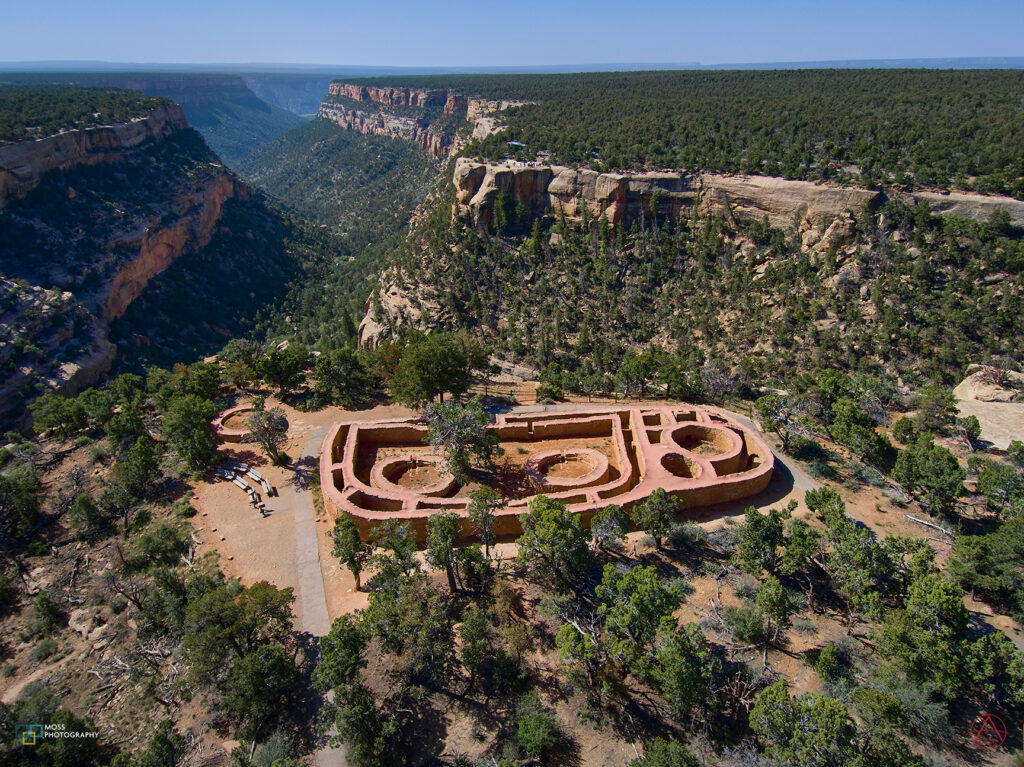
And we also can’t discuss the hypocrisy of this situation without talking about UAS flight restrictions inside the DC FRZ. Washington D.C. is (justifiably) the most monitored and protected airspace in the United States. In order to fly there, you need all kinds of special permissions and background checks. Yet what is the most popular brand of drones used when a drone pilot gets all of those boxes checked? Yep, you guessed it, DJI.
I know, I was part of a film crew that had permission to fly in the DC FRZ. Every drone we used outside of the facility we were shooting we a DJI drone. Every single one of them.
If the Anti-China crowd was doing this for actual security reasons instead of political posturing and pandering to U.S. drone makers, these overly broad and unnecessary restrictions would also apply to every drone flight inside the DC Beltway.
Anyway, those are simply two illustrations of the absurdity of such a blanket ban on our industry. There are more, but we won’t go into them in detail.
Back to the ASDA…
Section 1824 & 1825 includes a two year “deferment” of sorts.
They both mention, “Beginning on the date that is two years after the date of the enactment of this Act, no Federal department or agency may operate a covered unmanned aircraft system manufactured or assembled by a covered foreign entity.” So at least there is a two year buffer for the U.S. drone industry to catch up, or more likely, a two year buffer to try and get Congress to see the realities of the inevitable failures of this legislation.
So maybe we should concentrate on our Federal Legislators when it comes to this part of the NDAA over the next couple of years? Stay tuned for that.
Section 1825 describes when and where federal funds can be used, and by whom. It spells out that after the 2 year buffer, “…no Federal funds awarded through a contract, grant, or cooperative agreement, or otherwise made available may be used—
(1) to procure a covered unmanned aircraft system that is manufactured or assembled by a covered foreign entity; or
(2) in connection with the operation of such a drone or unmanned aircraft system.”
So what about state and local First Responders that accept Federal Grants? According to an article in the Georgetodwn Law Journal, includes about 20% of civilian law enforcement agencies since 2015. But what do those local agencies do with those federal funds? Some use the funds for hiring new officers, update communications systems, or possibly fund a new or existing drone team. And it’s the latter use that will be affected by Section 1825.
This section has the very distinct possibility of preventing many state and local agencies from starting a drone team or updating a current one. This could literally have deadly consequences for the local folks those agencies are tasked with protecting.
There is example after example where drones have been used to save the lives of those who are lost or injured. We’ve seen over 1000 to date. And we have seen many stories where drones have been used to identify hot spots on a structure fire, saving property and even lives. And there are many, many examples of drones being used by police agencies to protect First Responders and deescalate hostage or stand off situations. How many of those agencies will be directly impacted by their inability to procure or replace their UAS fleets?
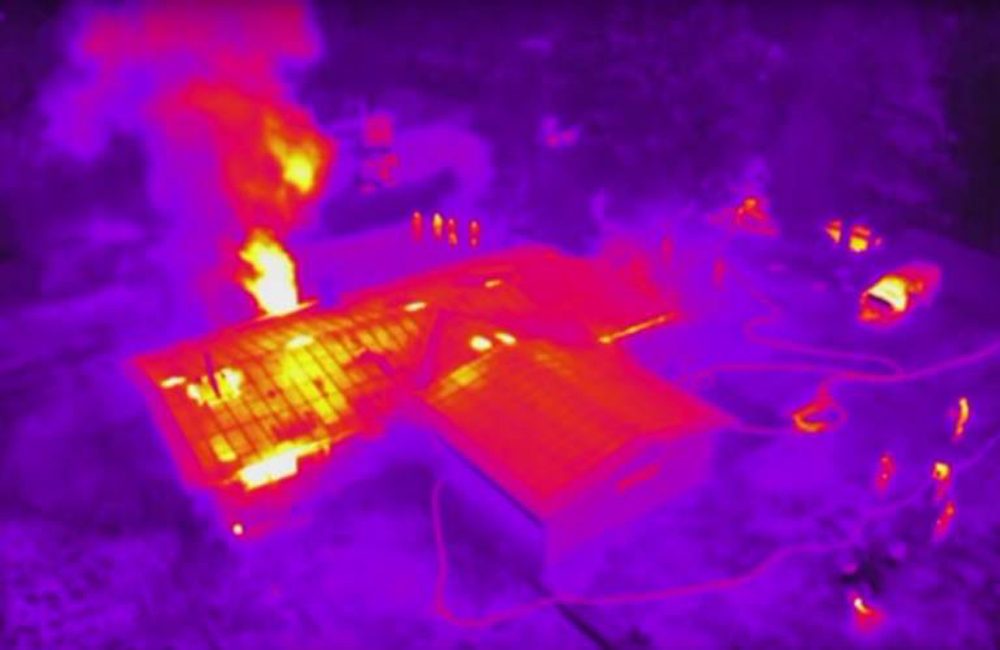
I believe Section 1830 was included as a false narrative against Section 1825. It mentions that nothing contained in “Subtitle B—Drone Security” shall prevent “… a State, local, or territorial law enforcement or emergency service agency from procuring or operating a covered unmanned aircraft system purchased with non-Federal dollars.” Of course a federal law won’t prevent that. Why include the obvious?
Which brings us to the the few bright spots in Subtitle B.
Section 1831; simply titled “Study”.
This section calls for a study of the supply chain needed for any hope at actually ever producing a decent drone that will be competitive with such drones as the DJI and Autel prosumer lines. And that’s what we desperately need. Sure, we can currently produce some higher end drones that are fairly competitive with DJI and Autel lines. But the vast majority of drones sold and used in the U.S. are not in that price range. And if the US drone industry wants to compete with the Autels and DJIs of the world, we need the prosumer sector of drone manufacturing as part of the US based industry. Until then, we can’t simply cut off the First Responders and Government Agencies from what truly is the best product for the price. None of which currently have had true evidence of a serious cybersecurity threat shown.
How can we as an industry truly make a difference and get our elected official to understand the true affect this will eventually have on the entire UAS industry?
Stay informed, get educated, and take action. Get in contact with your federal elected officials. They need to hear from the boots on the ground, not from the lobbyists paid for from federal grants given to U.S. drone manufacturers.
We have two years to set this straight. Let’s not wait too long to start.
My best advice to you is to join Drone Advocacy Alliance (DAA). We are a non-partisan, drone-agnostic, grassroots advocacy coalition. You’ll be joining such organizations as DRONESENSE, Dronelink, DSPA, Hollywood Drones, Pilot Institute, flytbase, and many others who already support the DAA.
Joining DAA will give our industry a unified voice in Washington D.C. It will also keep you informed of all of the changes going on. Washington politics can be a confusing sea to navigate. DAA gives you the inside tack to navigate those waters.
And another way to put the minds of those so bent on upsetting our industry at ease is to suggest that there is another way to protect our national security when drones are used. Simply introduce a bill that requires the DHS and/or other Federal Security Agencies to work with industry stakeholders and develop and require a set of cybersecurity protocols for all UAS used by Federal Agencies where national security is an issue. And part of that protocol needs to establish when and where national security is not only an actual issue, but when and where national security isn’t an actual issue.
Such as Mesa Verde National Park. Okay, I’ll get off my soapbox about that shoot now. This is the last time I’ll mention it.
That set of protocols will put an end to any and all of these alleged security issues. And if they’re applied to each and every drone used, regardless of country of origin, problem solved. Real or exaggerated. Because anyone with half a brain knows that anything that connects to the internet is vulnerable. Regardless of where is was made. Those cybersecurity issues would help mitigate those “concerns”. No argument can be made otherwise
Cyber security protocols are the answer. It’s truly that simple. And it doesn’t upset the industry while it’s being developed. Let’s do this together. Let’s use logic instead of paranoia and worse case scenarios, to craft effective regulations that doesn’t cripple parts of the very important UAS industry in the United States.
And we can push for this as an industry. Join us at Drone Advocacy Alliance. Stay educated. And use that knowledge to educate our elected officials in DC and in our home states.
And as always, Fly Safe!
Do you know anyone who get a drone for Christmas? Do you know if they know the rules? Point them to the FAA’s TRUST test at Pilot Institute. It’s required for recreational users, and helps them learn the basics. Or did you get a new drone for Christmas (or did you business as one to it’s current fleet)? Check out Pilot Institute’s free Deep Dive collection for tips and trick for many drones.

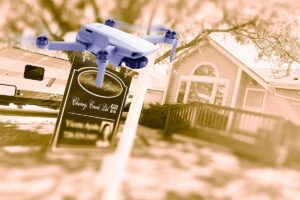
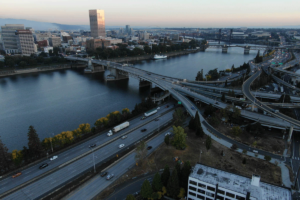
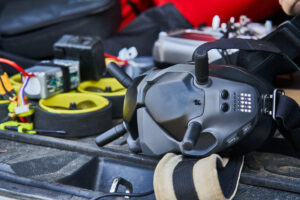
Pingback: Drone News: Drone Hits a Robinson Helicopter, 2024 American Security Drone Act, and a Drone Rescue Pilot Institute — Pilot Institute – Romulan News Channel